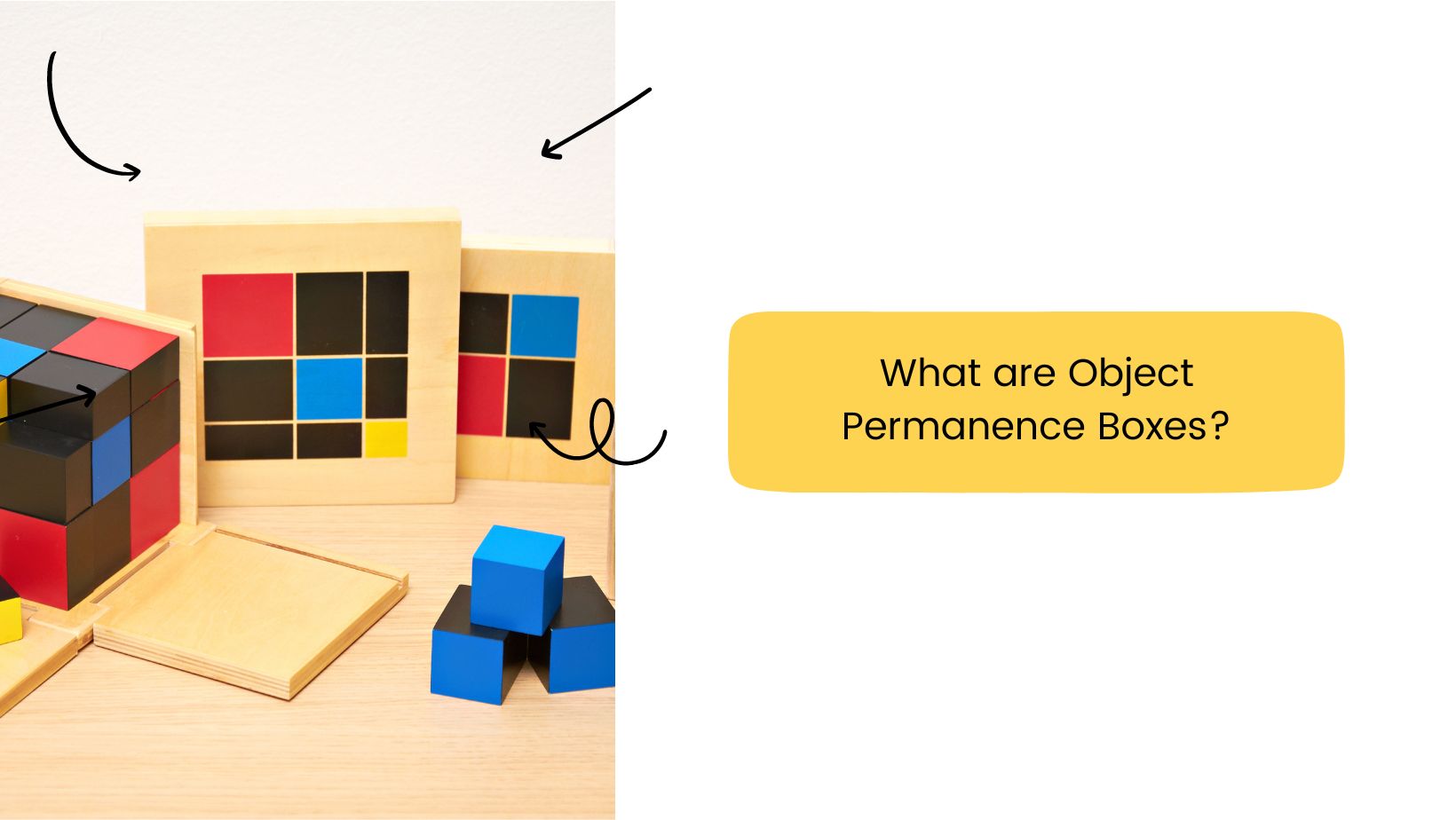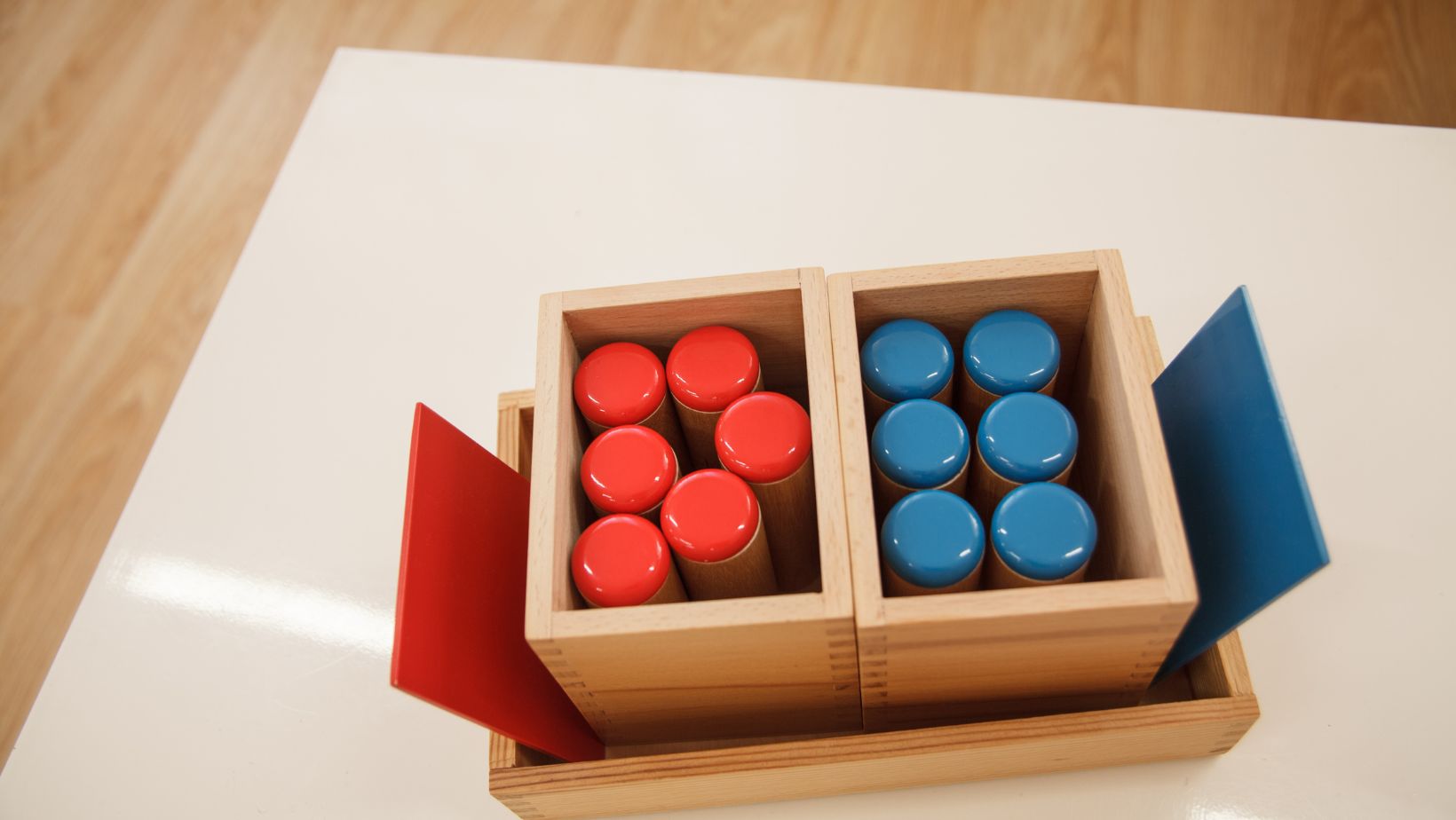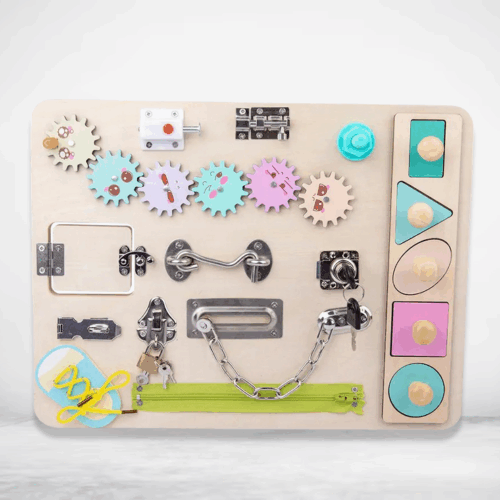Though object permanence is developed in many infants by the time they’re 6 months old, most parents don’t start to introduce object permanence boxes until their children are closer to their first birthdays. But what are these objects, and why are they used?
Let’s explore three of the top recommended object permanence boxes and why you should use them in your child’s Montessori environment.
What are Object Permanence Boxes?

It is a classic Montessori product taught to infants when they can sit independently, which is around 6 months old. Children can use an object permanence box to understand that objects are still there even when they are no longer in view.
To use this object permanence box, the infant puts a big wooden ball inside the hole outside the box. The ball disappears briefly inside the box but is then seen again as it is rolled back onto a tray. The child can easily pick it up. A baby active in learning about objects’ permanence may engage in lengthy periods of repetition of the task until it is reached.
Top 3 Object Permanence Boxes

Object Permanence Box
In the traditional Montessori infant toy, you put the ball into the hole at the top, and then a hidden ramp within the box returns the ball to the tray just a second later. The ball “disappears” in the hole before returning to the child.
Imbucare Board with Ball
This material inserts the ball into the hole, then disappears on the other side. They can then reach the opposite side and be able to see the ball.
Box with Sliding Lid
The material is small enough that tiny toys or shapes can be put in one corner of the box. The lid is then slid over the other side, obscuring the toys from view, and it opens to reveal an empty side. Thus, a child can move the lid in and out to discover and hide items out of view.
What are the benefits of the Montessori object permanence box?
It’s a great way to teach children that the Object Permanence box assists the child in realizing that an object that is removed out of sight still exists and will be back.
Children aged 7 months and up enjoy this material for several reasons. It’s fun and difficult to get the ball in the hole. The ball makes a pleasant sound and then appears after a short disappearance.
This material inspires repetition, an important element in developing a child’s concentration.
- Increases the strength of the hand muscles
- Aids in gaining fingers’ strength and coordination throughout the body
- Aids to make controlled self-controlled movements the hands
- It stimulates gross and fine motor abilities
- New sensations
- It encourages thinking logically
- Creates intentional moves and plans actions
- The development of the hand-eye coordination
- Helps visual development (tracking moving objects)
- It fulfils the baby’s need to discover a concept on their own
- Passing an object is a way to encourage crossing that middle line within the person’s body…
- This then stimulates both sides of the brain.
The bottom line
Object permanence boxes can be a valuable tool for parents and educators alike. They’re not only fun to play with, but they also teach children about object permanence. The best part about these is that they are not expensive at all!
If you want your newborn little one to grow up and know how to handle money responsibly, you need to teach them now. Teaching these lessons from an early age will help ensure success later on in life. It’s never too early or too late to start teaching your kids important life lessons through educational toys like these three object permanence boxes.






